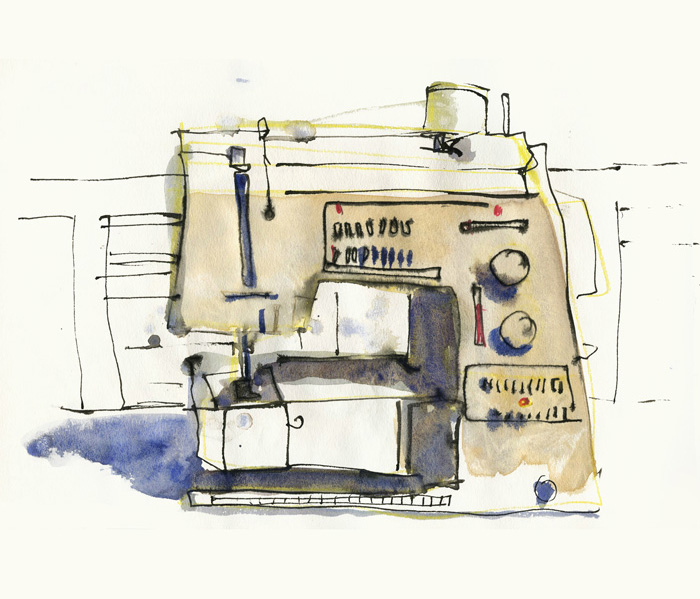
This week in the Foundations Friday series we are up to one of my favourite lessons: Minimal Setup. The big idea of this lesson is to minimise the amount of pencil setup lines you need before starting with ink. And the most minimal setup of all, is none, just drawing directly in ink.
A lot of people are very adamant that drawing directly in ink is the only way to go, but I am not one of those. In the past, I found that a few quick gestural pencil lines allowed me to work faster and more confidently, with stronger lines. The key is that I wasn’t trying to achieve a super accurate outline with the pencil, instead it was a quick gestural mapping out of the big picture. The cover image (from a few years ago) started with a few loose yellow lines.
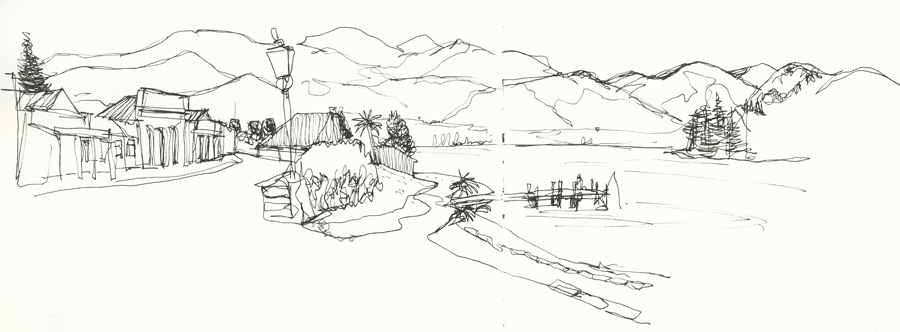
I am less dependent on setup lines these days as I have worked out a few approaches to drawing directly in ink that I am comfortable with. One of these is drawing with a continuous line with my White Joy Lamy pen. I work more slowly than normal and know that a certain degree of distortion is likely, so I get into an “embrace the wonkiness” mindset. An example of this is the Cromwell Sketch from my recent trip to NZ.
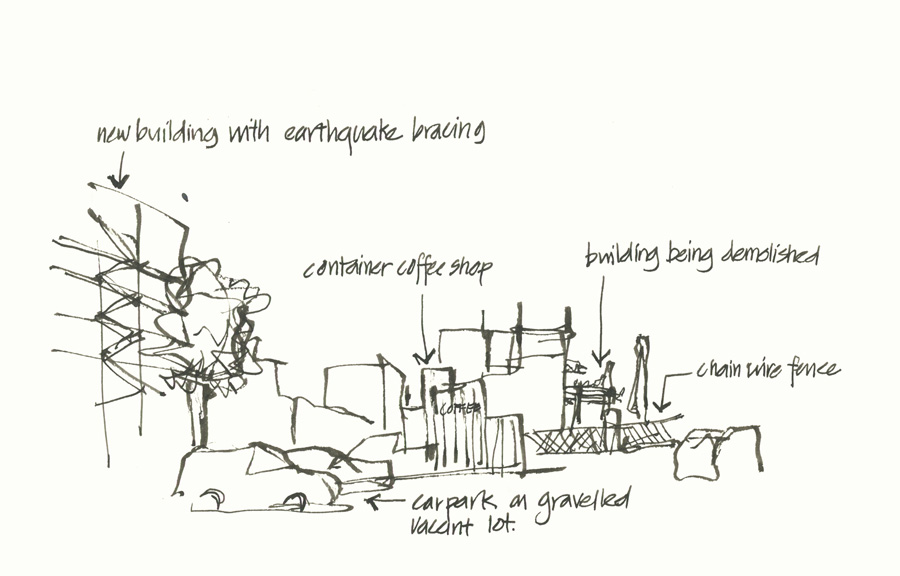
Another option for drawing directly in ink, is to use my Sailor Fude Pen and work fast. The expressive line of the Fude Pen removes my concern for precision and as a result, I just go for it. One thing that I have discovered about my own work over the years is that my natural pace is fast (very fast) and therefore I am often more accurate when I trust my instinct and work quickly. Here is another NZ example.
Another really interesting development in my work in recent years is starting with shape first. While this helps a lot with my sense of colour and makes it easier for me to focus on my watercolour washes, I realised recently that it is also acting as a minimal setup. I can quickly lift the paint from an incorrect brush stroke or simply draw over a wrong shape in my pen. Here are two examples of this painted minimal setup.
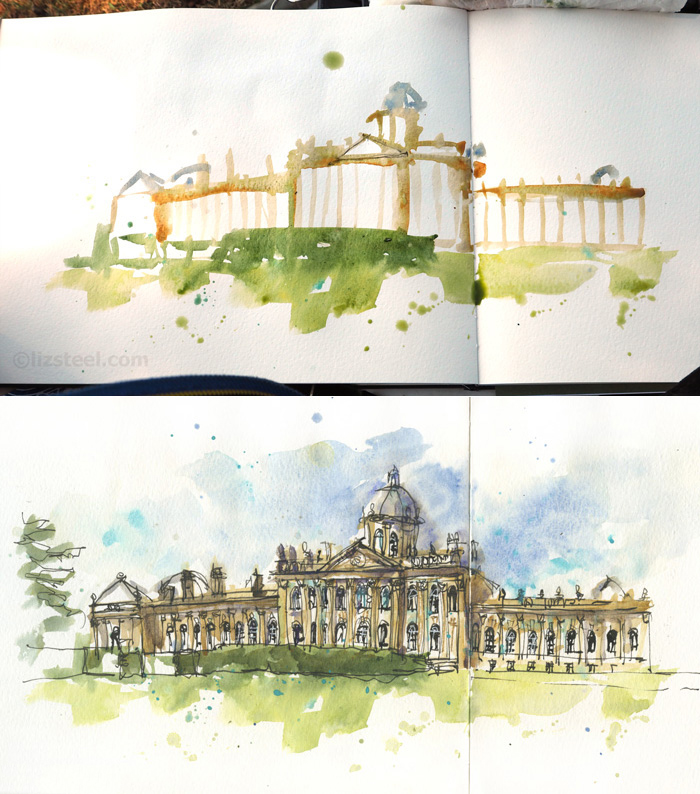
In this sketch of Castle Howard, Yorkshire UK from my July trip, I painted and set out the building structure first in the same way I would have done in pencil.
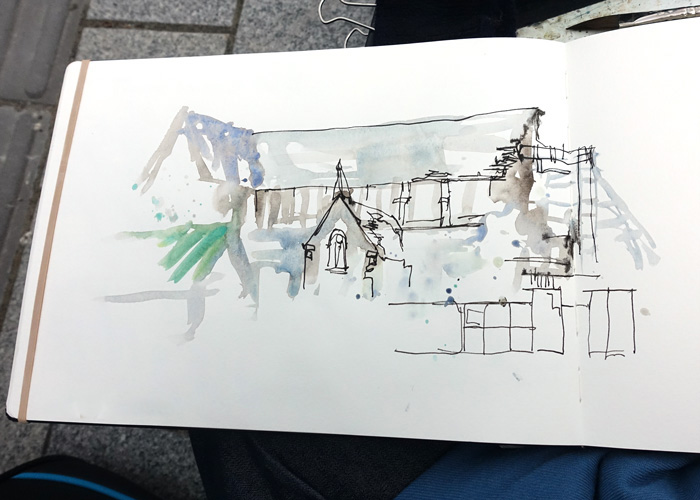
Another example can be seen in this progress photo of my Christchurch cathedral sketch. I started with a few light watercolour washes to establish the major shapes and then worked from there. As I have mentioned before in the article on Abstracting Shapes, starting with paint means you are less likely to be caught up in the details.
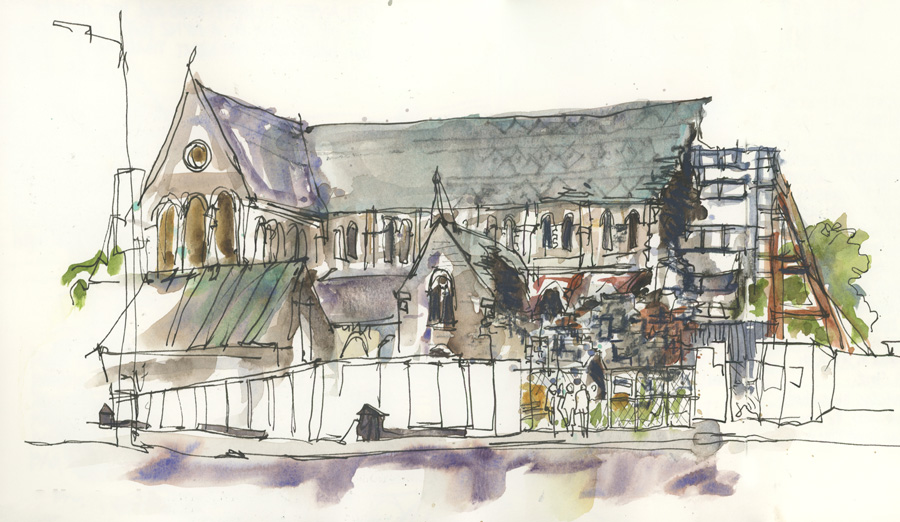
Here is the finished sketch and if you missed it, I talked about the challenges of this sketch in this video. It was one of the most challenging subjects I have sketched in a long time and it’s interesting to look back and reflect on how much of the freshness of the first pass was lost in the process. We learn with every sketch, don’t we?
Finally: A few years ago I wrote an article explaining some more background behind my use of a pencil and in particular red lead. Check it out here.
So do you use pencil or not? Let’s start the debate!

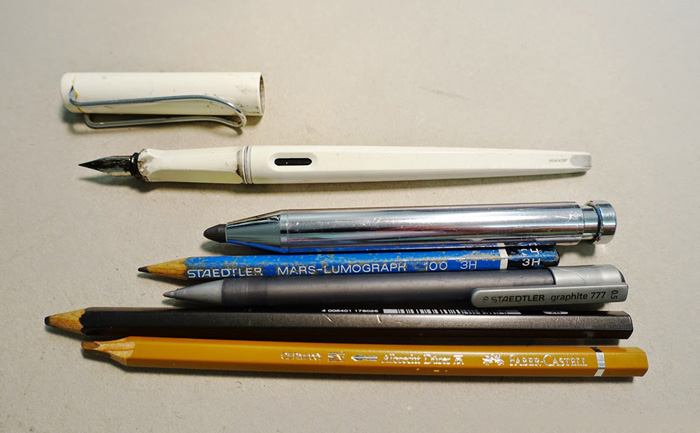



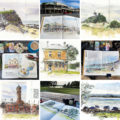
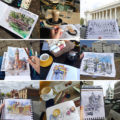
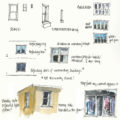
5 Comments
It depends on the kind of sketch I’m doing. If it is very architectural I may do pencil lines first. I am trying to do most of my “quick” sketches directly in pen.
I’m with you Liz, on the minimal set-up. I just want to get into the sketch quickly. Much of that has to do with the fact that I don’t have much sketching time each day. My medium(s) of choice are Micron pens, sharpie markers, Koi brush pens and white Gelly Roll pens. No pencils as I don’t like the smudgy factor either. I work one of two ways, either: 1) directly in ink if I am fairly confident in the direction of the sketch, or 2) I will lay down a quick outline of the gesture, or abstracted shape before sketching in ink if the subject is more complex. (My concentration is figure drawing.)
Either way, and regardless of the time factor, I prefer quicker, simpler sketching in ink. The “less is more” philosophy. Some of the most beautiful sketches I have seen, and that I aspire to, are those that say so much with just a few simple, confident lines. Pure and succinct!
I missed adding in #2 above that the quick outline of the gesture, or abstracted shape is done in very light-colored brush pen, that eventually blends into the finished sketch. Particularly if I later “paint” with brush pen to add tones and values at the end of the sketching process.
Just wanted to say that I registered for the Urban Sketching Symposium and will be taking your workshop while there. I can’t wait!
thanks for the comments everyone – always great to hear how other people like to work,
NEWSLETTER
Subscribe for first notification of workshop + online classes and more.